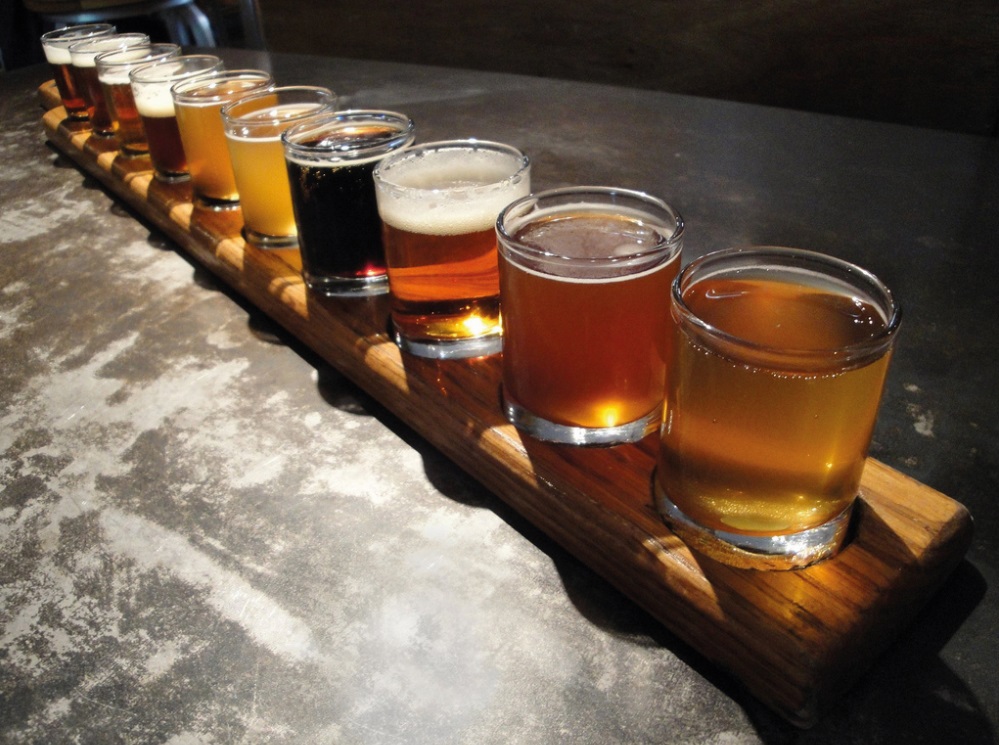
Beer: What's after craft?
Martin Constable, chairman of the Can Makers says: “Perhaps the most striking development in can technology, from a consumer’s point of view, is the emergence of cans that change colour. This is made possible by the use of thermochromic inks or dyes: temperature-sensitive compounds that temporarily change colour.
“It’s not only a thermometer that tells you when your beer is cold enough, it also provides an opportunity to personalise by creating your own handprint.”
STAYING LOCAL
More and more craft breweries are now rejecting the idea of exporting beers and are turning attention to dominating the local area. This works better for breweries based in cities than the countryside for the same reason as transport.
Tom Hearn, a business director at marketing agency Nude Brand Creation, which has worked closely with craft breweries, says: “The essence of craft is built on locality and provenance, and it is much easier for a start-up or small-scale brewer to attract a local audience first.
‘Not only does it make financial sense to work locally (distribution, shipping costs etc), but current consumers have a huge sense of pride in where they come from or live and will be much more likely to adopt a local brand than one from elsewhere.”
Locality is under threat, however. A common theme developing in craft beer is bigger breweries such as AB Inbev and Asahi taking over popular breweries in cities such as London, which is jeopardising the craft title.
Meantime was taken over by Asahi in 2015, making it one of the largest craft breweries in London alongside Camden Town Brewery, but Giblin believes the positives outweigh the negatives.
“Having such a big company behind us gives us support. It helps us expand while maintaining our quality and consistency because of the access we get to technology.”
IMPROVING THE EXPERIENCE
In the Czech Republic, rather than breweries giving their beer to a bar or pub, they use what’s called a ‘tapster’. This is essentially a barista for the beer industry.
The tapster looks after the beer’s storage, knows the correct techniques of pouring different beers and understands the type of glass each beer should be consumed from. This gives consumers a greater on-trade experience and it could be something the craft movement turns to as a way of developing the premium aspect.
Steven Bewick from Purple Creative, which works with Czech beer Pilsner Urquell and Peroni adds: “Guinness is the only brand which has got consumers to buy into the quality pouring aspect of its beer.
“I think we need an attitude shift towards quality transport, storage and pouring. The big breweries don’t seem to understand craft beer because they’re brewing by numbers and spend more money on advertising than quality. However they may need to rebrand.
“I think the craft movement will evolve but I don’t think it will stop. The issue for consumers will be that it will become harder to spot good craft beers because anyone with a shed could claim to be craft, so only the good tasting beers will survive.”
MILLENNIAL TRENDS
The drinks trade’s favourite consumers, millennials, are putting more emphasis on healthy living, prompting the emergence of lower and non-alcoholic beers.
Nude Brand Creation’s Hearn says: “Low and no-alcohol beer is a category predicted to grow. This isn’t just aimed at beer drinkers who need a no-alcohol alternative on certain occasions.
‘It’s also targeting soft drink consumers and drinkers of other no-alcohol products and attracting them into the category.
“There is a blurring of categories across the whole drinks sector and this will only continue within beer.”
Of course, not every beer company wants to follow the craft movement. According to Bewick, Italian brand Peroni wants to become more of a fashion brand than a beer and wants nothing to do with the term craft.
It is important, therefore, to remember that not everyone associates the term craft with quality – some people associate the word with scruffiness or shoddiness.
Regardless of how people perceive the word craft, like gastro it will likely appear on pub menus for years to come.
Whether the word craft will be replaced by fresh or local is quite possible, but until then just enjoy a Sunday afternoon accompanied by a gourmet burger and a craft pale ale.
